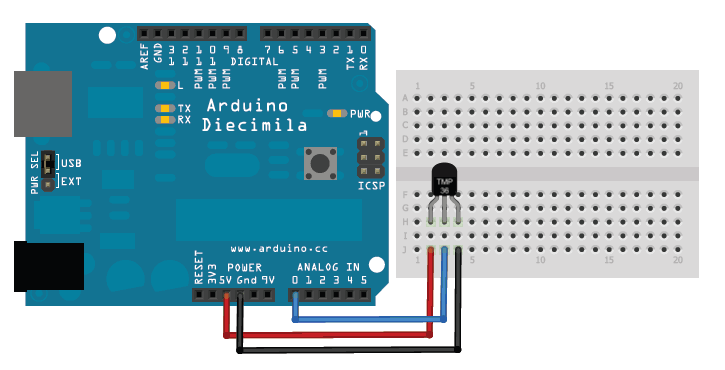I successfully got the Memsic 2125 Accelerometer to work on my Netduino, so I decided to take a crack at controlling a servo by measuring Tilt. I'm sure I could do a lot to make this more efficient but I just wanted to get this working first:
Below is the code I used (I plan on doing a lot more work to get this going right. Once I do, I will properly comment my code and clean things up to make it more user friendly.):
using System;
using System.Threading;
using Microsoft.SPOT;
using Microsoft.SPOT.Hardware;
using SecretLabs.NETMF.Hardware;
using SecretLabs.NETMF.Hardware.Netduino;
namespace Memsic
{
public class Program
{
static int count = 0;
static uint _lastposition = 0;
static InputPort Xin = new InputPort(Pins.GPIO_PIN_D2, false, Port.ResistorMode.Disabled);
static InputPort Yin = new InputPort(Pins.GPIO_PIN_D3, false, Port.ResistorMode.Disabled);
static PWM ServoY = new PWM(Pins.GPIO_PIN_D9);
public static void Main()
{
while (true)
{
int X = TiltToServoPulse(GhettoTilt(Xin));
int Y = TiltToServoPulse(GhettoTilt(Yin));
MoveServo(ServoY, (uint)Y);
//Debug.Print("X:" + X + "," + "Y: " + Y);
}
}
//Read the specified port and grab some values to calculate Ghetto Tilt.
static int GhettoTilt(InputPort axe)
{
count = 0;
// Loop until pin reads a low
while (axe.Read() == true) { }
// Loop until pin reads a high
while (axe.Read() == false) { }
// Loop until pin reads a low and count
while (axe.Read() == true)
{
if (axe.Read() == false) { break; }
count += 1;
}
count = count - 21;
return count;
}
static void MoveServo(PWM whatservo, uint whereto, int sleep = 0)
{
if (_lastposition == whereto) { return; }
uint HowLong = 0;
if (whereto > 2000 || whereto < 1000) { return; }
whatservo.SetPulse(20000, whereto);
if (_lastposition == 0) { HowLong = 300; }
else { HowLong = _lastposition > whereto ? (_lastposition - whereto) / 3 : (whereto - _lastposition) / 3; }
Debug.Print("" + HowLong);
Thread.Sleep((int)HowLong);
whatservo.SetPulse(0, whereto);
_lastposition = whereto;
if (sleep != 0) { Thread.Sleep(sleep); }
}
static int TiltToServoPulse(double Tilt)
{
double pulse = 0;
Tilt = Tilt - 1;
double calc1 = Tilt / 18;
pulse = (calc1 * 1000) + 1000;
return (int)pulse;
}
}
}
..and a video of the results:
http://www.youtube.com/watch?v=xTijhSgqMfM
Jason



 Find content
Find content Male
Male



